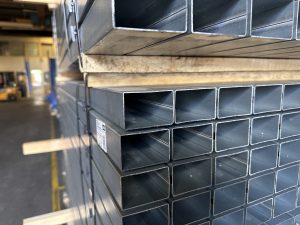A Comprehensive Comparison of Powder Coating and Galvanizing in Industrial Applications

In the industrial sector, both powder coating and galvanizing are widely utilized for their unique characteristics and advantages. This article aims to provide a comprehensive comparison of these two surface treatment methods, considering aspects such as cost-effectiveness, durability, environmental friendliness, and more.
Surface treatment plays a crucial role in protecting industrial components from corrosion, enhancing their aesthetic appeal, and ensuring longevity. Among the various surface treatment techniques, powder coating and galvanizing have gained widespread popularity due to their distinctive features and superior performance in different industrial applications.
Cost-effectiveness
When it comes to cost considerations, powder coating is often regarded as a cost-effective solution compared to galvanizing. The application process of powder coating is highly efficient, resulting in minimal material wastage and reduced overall costs. Additionally, the ability to reclaim and reuse excess powder further contributes to cost savings. On the other hand, galvanizing involves a more complex and resource-intensive process, leading to higher initial expenses.
Durability
In terms of durability, both powder coating and galvanizing offer exceptional protection against corrosion and mechanical damage. Powder coating creates a robust, seamless finish that exhibits high resistance to chipping, scratching, and chemical exposure. Similarly, galvanizing forms a durable zinc coating that acts as a sacrificial layer, providing long-lasting protection even in harsh environments. However, in applications where the coated surface is subject to severe abrasion or impact, powder coating may offer superior resistance compared to galvanizing.
Environmental Friendliness
The environmental impact of surface treatment methods is a critical consideration for industrial operations. Powder coating is renowned for its eco-friendly attributes, as it does not involve volatile organic compounds (VOCs) or hazardous air pollutants, contributing to cleaner air quality and reduced environmental footprint. Moreover, the ability to recover and reuse oversprayed powder minimizes waste generation. Galvanizing, while effective in corrosion protection, may raise environmental concerns due to the use of molten zinc and the associated energy consumption. However, advancements in galvanizing techniques have resulted in improved energy efficiency and reduced environmental impact.
Aesthetics and Versatility
Both powder coating and galvanizing offer versatile finish options to meet diverse industrial requirements. Powder coating provides a wide range of colors, textures, and gloss levels, allowing for customization and aesthetic enhancement of components. In contrast, galvanizing produces a metallic, spangled appearance that is well-suited for applications where a visually striking finish is desired. Additionally, the ability of galvanized coatings to adapt to various shapes and sizes makes it a preferred choice for complex geometries and structures.
In conclusion, the selection between powder coating and galvanizing depends on specific operational needs, performance expectations, and environmental considerations. While powder coating excels in cost-effectiveness, environmental friendliness, and aesthetic versatility, galvanizing remains unparalleled in terms of long-term durability and protection in aggressive environments. Understanding the unique advantages of each method empowers industrial practitioners to make informed decisions and achieve optimal surface treatment solutions.
By presenting a comprehensive comparison of powder coating and galvanizing, this article aims to serve as a valuable resource for industrial professionals seeking insights into surface treatment options. The balanced assessment of cost, durability, environmental impact, and versatility contributes to an informed decision-making process, ultimately improving the effectiveness and sustainability of industrial operations.

 D5 Creation
D5 Creation